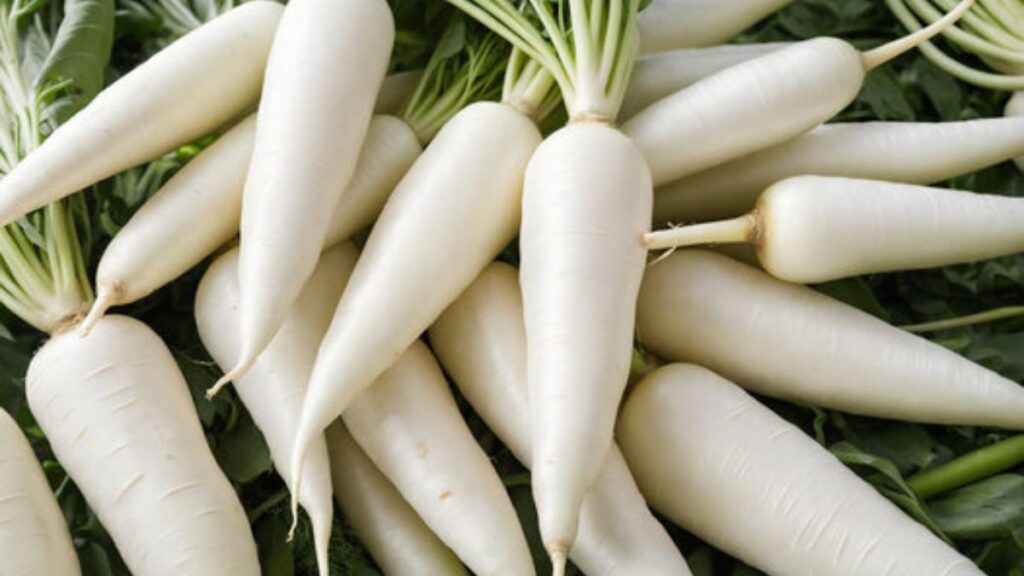Carrots are a staple in many households, known for their vibrant orange color and crunchy texture. However, there’s a lesser-known variety that offers a unique twist on this classic vegetable: the white carrot. In this article, we’ll delve into everything you need to know about white carrots, including their benefits, culinary uses, and how they compare to their orange counterparts.
What Are White Carrots?
White carrots are a variant of the traditional carrot, distinguished by their pale, ivory-colored skin and flesh. Unlike the orange carrots we commonly see, white carrots lack the pigment known as beta-carotene, which gives carrots their vibrant color. Instead, white carrots contain other pigments such as lutein and anthocyanins.
History and Origin
White carrots have been cultivated for centuries and were originally grown in ancient Persia and Afghanistan. Historical records indicate that carrots were once available in a range of colors, including white, purple, red, and yellow. It wasn’t until the 17th century that orange carrots became the dominant variety, largely due to selective breeding in the Netherlands.
Nutritional Profile
While white carrots may not have the high levels of beta-carotene found in orange carrots, they still offer a range of nutritional benefits. They are rich in vitamins and minerals, including:
- Vitamin C: Important for immune function and skin health.
- Fiber: Aids in digestion and promotes a healthy gut.
- Potassium: Essential for heart health and regulating blood pressure.
- Antioxidants: Help protect the body from oxidative stress and inflammation.
Culinary Uses of White Carrots
White carrots can be used in a variety of dishes, offering a subtle, sweet flavor that pairs well with many ingredients. Here are some popular ways to incorporate white carrots into your cooking:
Roasting
Roasting white carrots enhances their natural sweetness and creates a caramelized exterior. Simply toss them with olive oil, salt, and your favorite herbs, then roast in the oven at 400°F (200°C) for 20-25 minutes, or until tender.
Soups and Stews
White carrots make a great addition to soups and stews, adding a delicate flavor and creamy texture. They can be used in recipes that call for traditional orange carrots or can be featured in recipes specifically designed for white carrots.
Salads
For a fresh and crunchy addition to salads, try using raw white carrots. They can be sliced thinly or shredded and added to salads for extra texture and a subtle sweetness. Pair them with a tangy vinaigrette to balance their flavor.
Pickling
Pickled white carrots are a delicious and versatile condiment. To pickle them, simply cut the carrots into sticks and submerge them in a vinegar-based brine with spices like dill, garlic, and mustard seeds. Let them marinate in the refrigerator for at least 24 hours before serving.
Comparing White Carrots to Orange Carrots
While white and orange carrots share many similarities, there are some key differences between them:
Nutritional Differences
Orange carrots are well-known for their high beta-carotene content, which the body converts into vitamin A. This nutrient is crucial for maintaining healthy vision and skin. White carrots, on the other hand, have lower levels of beta-carotene but still provide valuable nutrients like vitamin C and fiber.
Flavor and Texture
White carrots tend to have a milder, sweeter flavor compared to their orange counterparts. They also have a slightly different texture, which some people find to be more tender and less fibrous.
Appearance
The most noticeable difference between white and orange carrots is their appearance. White carrots have a pale, ivory color that can add visual interest to dishes. They also tend to be less vibrant in color, which might be preferable for certain recipes or presentations.
Growing White Carrots
If you’re interested in growing white carrots yourself, here are some tips to get started:
Soil Preparation
White carrots thrive in well-drained, sandy soil that is rich in organic matter. Make sure the soil is loose and free of rocks to allow the carrots to grow straight and uniform.
Plantind Maintenance
Keep the soil consistently moist but not waterlogged. Thin the carrot seedlings once they have a few sets of leaves to ensure they have enough space to develop properly. Regular weeding and mulching can help prevent competition and keep the soil temperature steady.
Harvesting
White carrots are typically ready to harvest in about 70-80 days. You can check their readiness by gently pulling up a few carrots to see if they’ve reached the desired size. Harvest them before they become too large, as they may become woody and less flavorful.
White Carrots in Popular Culture
White carrots are not just a culinary delight; they also have a place in popular culture and history. They are often featured in specialty foods and gourmet dishes, particularly in high-end restaurants that focus on unique and rare ingredients.
Art and Literature
White carrots have appeared in various artistic representations and literature. They symbolize rarity and purity, and their unusual color can make them a subject of artistic exploration and storytelling.
Culinary Trends
In recent years, white carrots have gained popularity as part of the trend toward heirloom and unique vegetable varieties. They are often showcased in farmer’s markets and specialty food stores, appealing to chefs and home cooks alike who are looking to add a touch of elegance to their dishes.
Conclusion
White carrots offer a unique and delightful alternative to the traditional orange variety. With their mild flavor, nutritional benefits, and versatility in the kitchen, they are a wonderful addition to any meal. Whether you’re roasting them, adding them to soups, or enjoying them fresh in salads, white carrots can bring a new dimension to your culinary repertoire.
By exploring the world of white carrots, you can enhance your cooking with this intriguing vegetable and enjoy its subtle sweetness and health benefits. So why not give white carrots a try in your next recipe and experience their unique charm for yourself?
FAQs
Are white carrots as nutritious as orange carrots?
White carrots are nutritious but differ from orange carrots in that they have lower levels of beta-carotene. However, they still provide important nutrients like vitamin C, fiber, and potassium.
Can white carrots be used in the same recipes as orange carrots?
Yes, white carrots can be used in any recipe that calls for orange carrots. They offer a milder flavor and can be a great addition to soups, stews, salads, and roasted dishes.
How do you store white carrots?
Store white carrots in the refrigerator, ideally in a perforated plastic bag or a container with a lid. They can stay fresh for several weeks when stored properly. For long-term storage, consider freezing them after blanching.
Where can I buy white carrots?
White carrots can be found at farmer’s markets, specialty grocery stores, and some supermarkets. They may not be as widely available as orange carrots, so checking with local markets or organic food stores may increase your chances of finding them.
Can white carrots be grown at home?
Yes, white carrots can be grown at home. They require well-drained, sandy soil and should be planted in early spring or late summer. With proper care, you can enjoy a fresh harvest of white carrots from your own garden.







